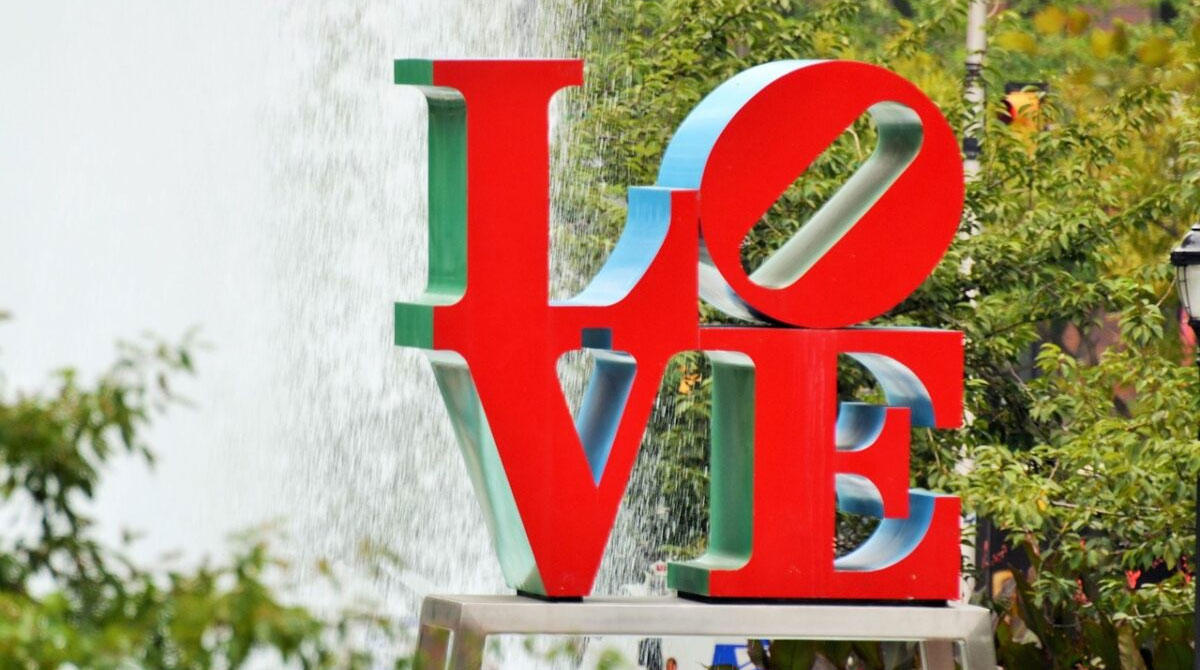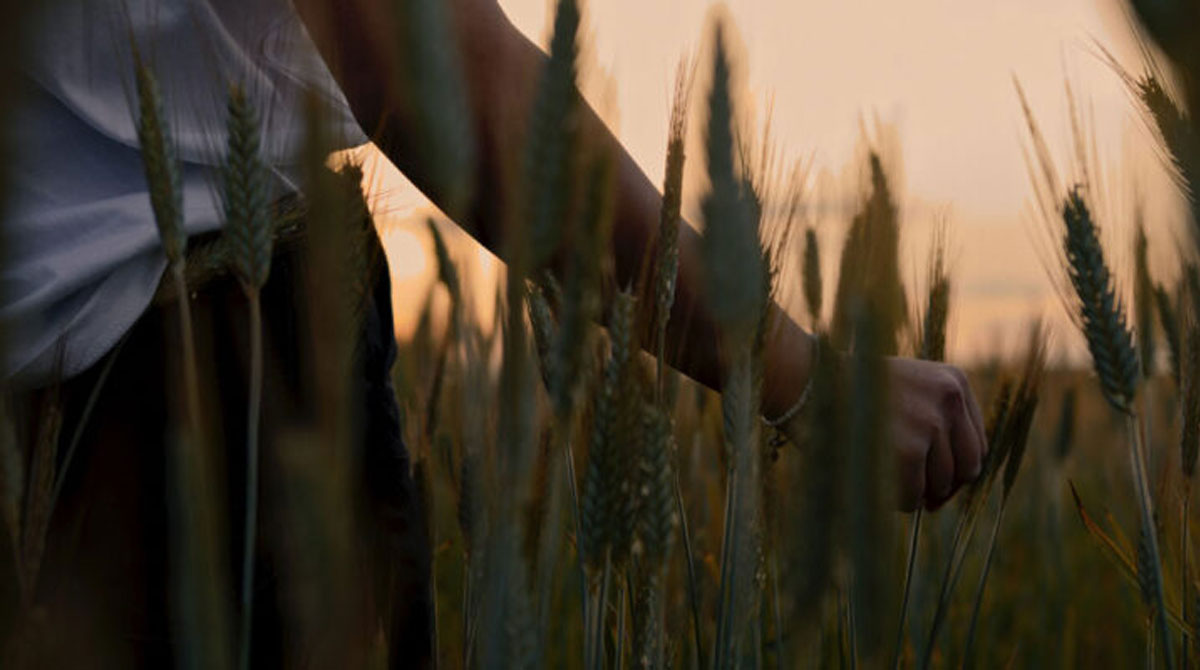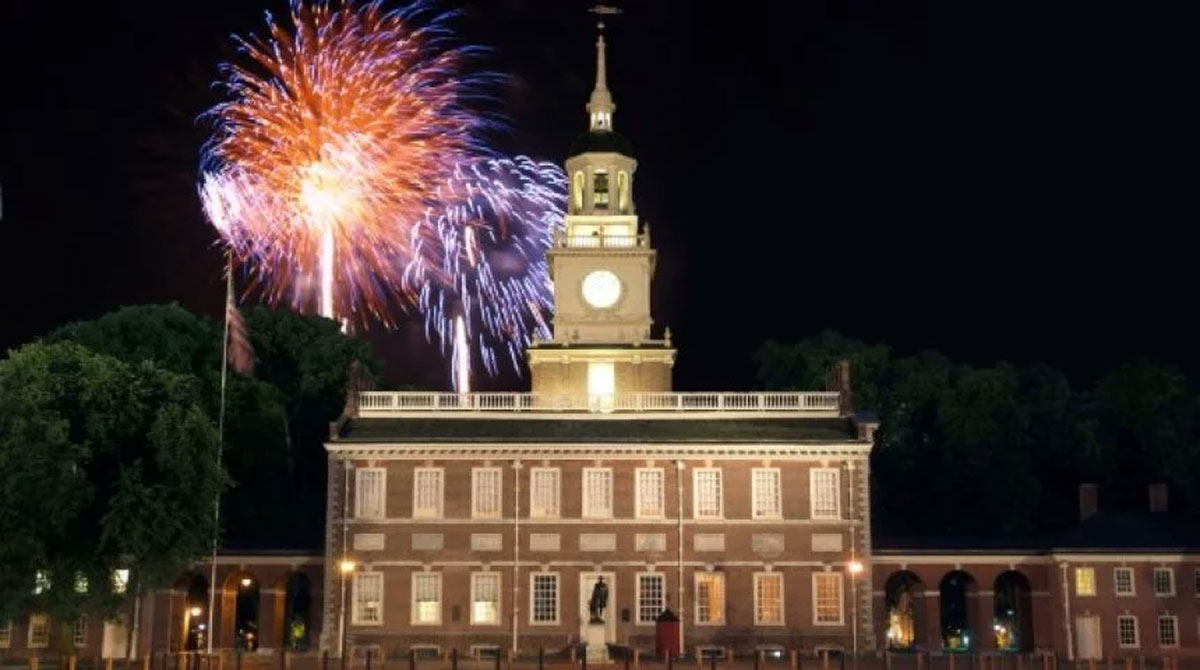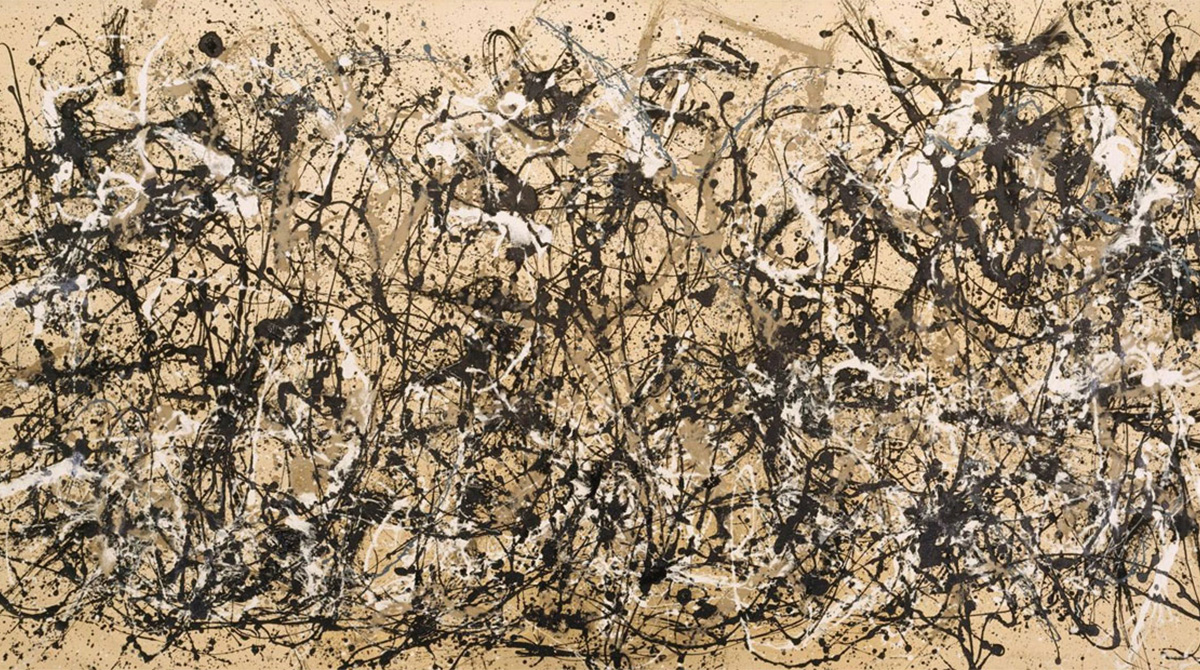A Four Letter Word: The LOVE Sculpture in Philadelphia
“Would you look at that, that’s nice isn’t it?”
— My Mom (circa 1976 when seeing LOVE for the first time)
In Center City, Philadelphia on the intersection of 15th Street and JFK Boulevard sits a sculpture that has become an iconic symbol of the city. The sculpture is 6’ high, 6’ wide, and 4’ deep. It consists of four letters, L-O-V-E, in a rounded serif font (Didone if you want to be specific) with the L and O sitting atop the V and E and the negative space inside the O at a 120-degree angle. It is painted red and purple.
The sculpture is deceptively simple but is a wonderful example of graphic design, pop art, and 60s counterculture all combined into a striking visual image that stands out in the crowded city landscape and commands attention. It is also rather sweet.
The sculpture* was created by artist Robert Indiana in 1975 and was lent to the city of Philadelphia to celebrate the Bicentennial. This was one of many similar “love” designs made by Indiana in the form of sculptures, paintings, and even a poem. The artwork just seemed to fit in the city immediately, it was a nice representation of the celebrations going on at the time and an embodiment of the 1970s as a whole.
But after two years the “extended loan” was ended and the sculpture was moved to New York. The reason? Robert Indiana asked the city of Philadelphia for payment. The city refused. Sadly, it seems people refusing to pay artists for their work is a long-standing tradition not only in Philadelphia but the world over.
Enter Fitz Eugene Dixon Jr. into the story. Dixon was the heir to a meat-packing and railroad fortune (somehow meat-packing and railroads just sound so Philly to me) who was part-owner of the Eagles and Phillies and the new owner of the 76ers and was intent on bringing nice things from New York to Philly. This included Julius Erving and LOVE. The jury is still out on which one has brought more joy to the city.
But Dixon apparently really liked LOVE and bought the statue for $35,000 then promptly donated it to Philadelphia. And so the statue was returned to its rightful place in JFK Plaza, later to be called Love Park for obvious reasons.
(Quick aside: JFK Plaza was designed by Ed Bacon, father of Kevin Bacon. Yes, that Kevin Bacon. So if you ever want to play ‘6 Degrees of Kevin Bacon’ with a pop-art statue in Center City Philadelphia, there you go.)
I grew up looking at those block letters of bold colors situated between towering buildings of steel and glass. It is such a simple thing, but it never fails to capture one’s attention. It is a word, a concept, a design. It is a powerful word whose meaning the viewer attaches to it. It is a concept that can be applied to a city, a neighborhood, or a person. And it is a design, a work of art. The letters are shaped into a form that is pleasing and pleasurable regardless of how one interprets their meaning. Much like love itself, I suppose.
To me, this sculpture has always been representational of the pride I have felt in my hometown, or rather the aspirational pride I feel in Philly. Philadelphia has a lot going for it. There is a long history that goes back well before the revolution that had a direct impact on what would become the United States. And it has always been a center for learning and culture, and a hub for artists, musicians, and free-thinkers. Although you might not know that if you’ve ever been to the 700 level of Veteran’s Stadium.
Regardless, the idea of ‘brotherly love’ was one of the founding principles of William Penn – a Quaker and a passivist – and that principle continues to this day. Philly has a bad reputation for being a tough city, one that it occasionally lives up to, but there is a great ideal that thrives in the city, an ideal that emphasizes self-expression and individuality, respect for others, and knowledge that in diversity there is strength. All are created equal was written here. This is a city with vast potential and principles that are to be applauded and cherished. This is a city that sometimes forgets about that.
And when it does there is a reminder right in the center of town, a bold reminder of the thing that is most important…
LOVE.
*BONUS TRIVIA: This is a sculpture, not a statue. A statue is typically representational like a person or an animal, while a sculpture pretty much covers everything else. There are many, many ways that this statement is incredibly reductive and there are a variety of exceptions to this rule (I look forward to being corrected mercilessly in the comments). This has nothing to do with this article; I just thought it was interesting.
“LOVE” (1976)
Artist Robert Indiana
associationforpublicart.org/love
Voices heard in the program: Robert Indiana (1928-2018) is the American painter and sculptor who created the iconic “LOVE” sculpture. Adrian Dannatt is the author of “Robert Indiana: Hard Edge” and “Robert Indiana: Wood.”
Segment Producer: Lu Olkowski
The Association for Public Art (formerly the Fairmount Park Art Association) presents Museum Without Walls™: AUDIO, an interpretive audio program for Philadelphia’s outdoor sculptures. Museum Without Walls™: AUDIO is presented in partnership with Philadelphia Parks & Recreation, and has been supported by The Pew Center for Arts & Heritage, the William Penn Foundation, and the National Endowment for the Humanities. Learn more at museumwithoutwallsaudio.org.












Likhon chowdhury says:
Conor says:
Andy Garcia says: